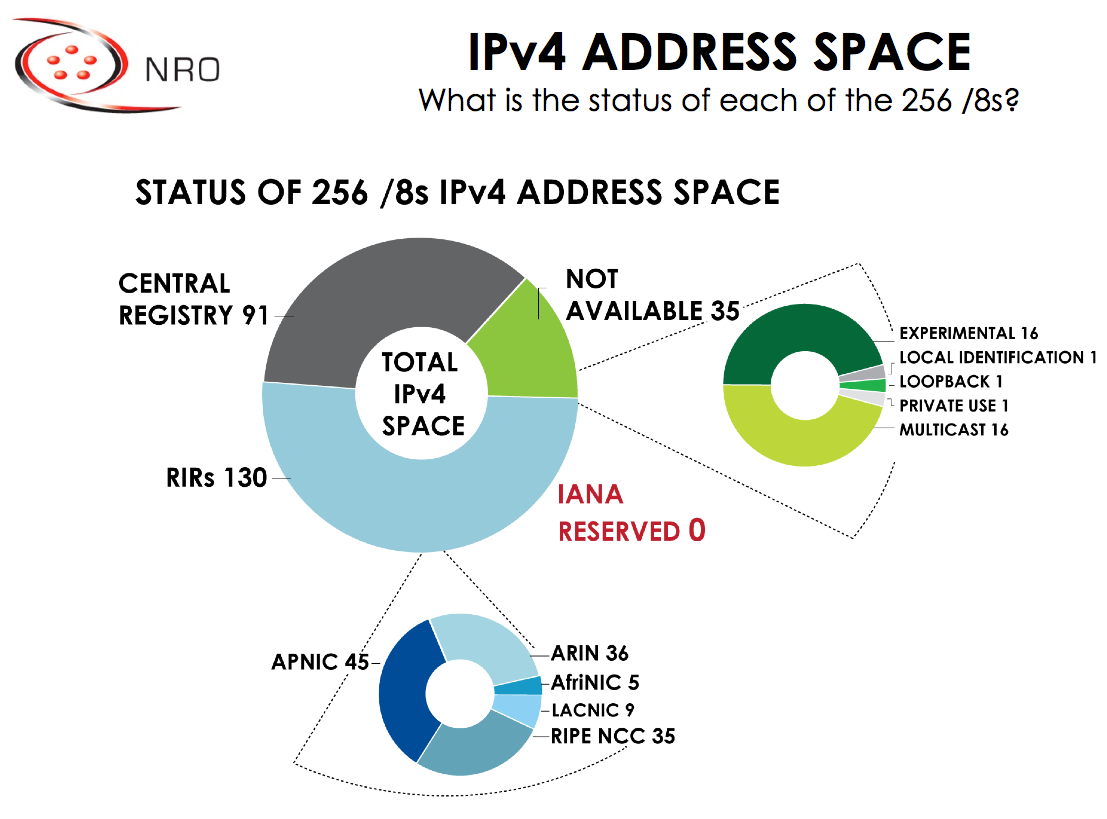
IPv4, Not Enough Addresses [Archived]
OUT OF DATE?
Here in the Vault, information is published in its final form and then not changed or updated. As a result, some content, specifically links to other pages and other references, may be out-of-date or no longer available.
There are 4,294,967,296 IPv4 addresses. At first glance 4,294,967,296 seems like a large number. Could you imagine how long it would take to travel 4.3 billion miles? The total weight of 4.3 billion elephants? Or the cost to throw a party for 4.3 billion friends? However, when it comes to IPv4 addresses, that number is just not large enough to satisfy the needs of the ever growing and changing Internet. We are inching closer to the point where Regional Internet Registries will not be able to distribute IPv4 addresses to everyone who needs and qualifies for the address space. The global free pool of IPv4 reached empty when IANA distributed a final /8 to each of the RIRs in February of last year. APNIC reached their final /8 of IPv4 space in April 2011, and other RIRs, such as the RIPE NCC and ARIN, are expected to soon follow suit. Ever wondered where all the IPv4 went? Well let’s take a look:

The graphic above, prepared by the NRO in December 2011, explains just where all of the IPv4 address space has gone. The IPv4 address pool is made up of 256 /8s (read slash eights). Each /8 contains 16,777,216 addresses. From the graphic above you can see the status of each of the 256 /8s that IPv4 contains.
- 130 /8s, by far the largest block of /8s, have been distributed to the RIRs for allocation in their respective regions.
- 91 /8s are contained in the central registry
- 35 /8s are not available for a variety of reasons, including experimental, local identification, loopback, private use, and multicast.
The most notable piece of information on the graphic shows that the IANA reserved space is at zero. There are no more new /8s to distribute to the RIRs around the world and therefore supplies of available IPv4 space at each Regional Internet Registry is steadily depleting. You might be wondering how we could go through so many addresses so fast. There are many reasons the Internet has expanded rapidly. One recent example is the increasing popularity and adoption of mobile technologies. How big is mobile?
- There are now 1.2 billion mobile Web users worldwide, based on the latest stats for active mobile-broadband subscriptions worldwide
- A recent report from Cisco predicts that mobile-connected devices will outnumber people by the end of this year.
- The Cisco report also forecasts that there will be over 10 billion mobile-connected devices by 2016
- Ericsson reports the Internet of Things will greatly expand over the next 10 years, projecting that there will be 50 billion internet connected devices by 2020
So next time you think to yourself “Where have all the IPv4 addresses gone?” look no further than the cell phone in your pocket. We’re continuing to track the final /8s of available IPv4 address space at ARIN. Check our depletion counter at https://www.arin.net/ for the latest updates.
OUT OF DATE?
Here in the Vault, information is published in its final form and then not changed or updated. As a result, some content, specifically links to other pages and other references, may be out-of-date or no longer available.
